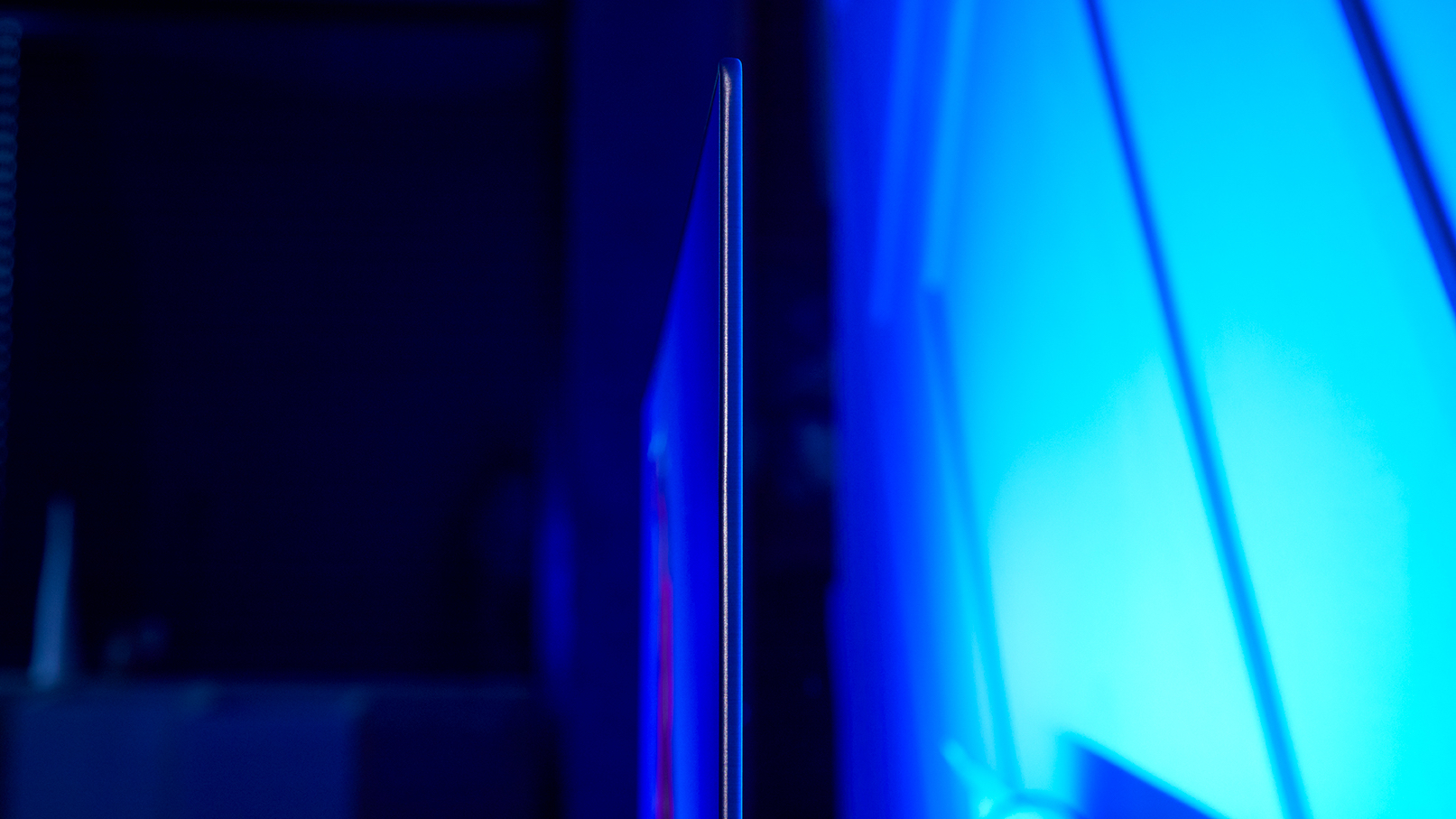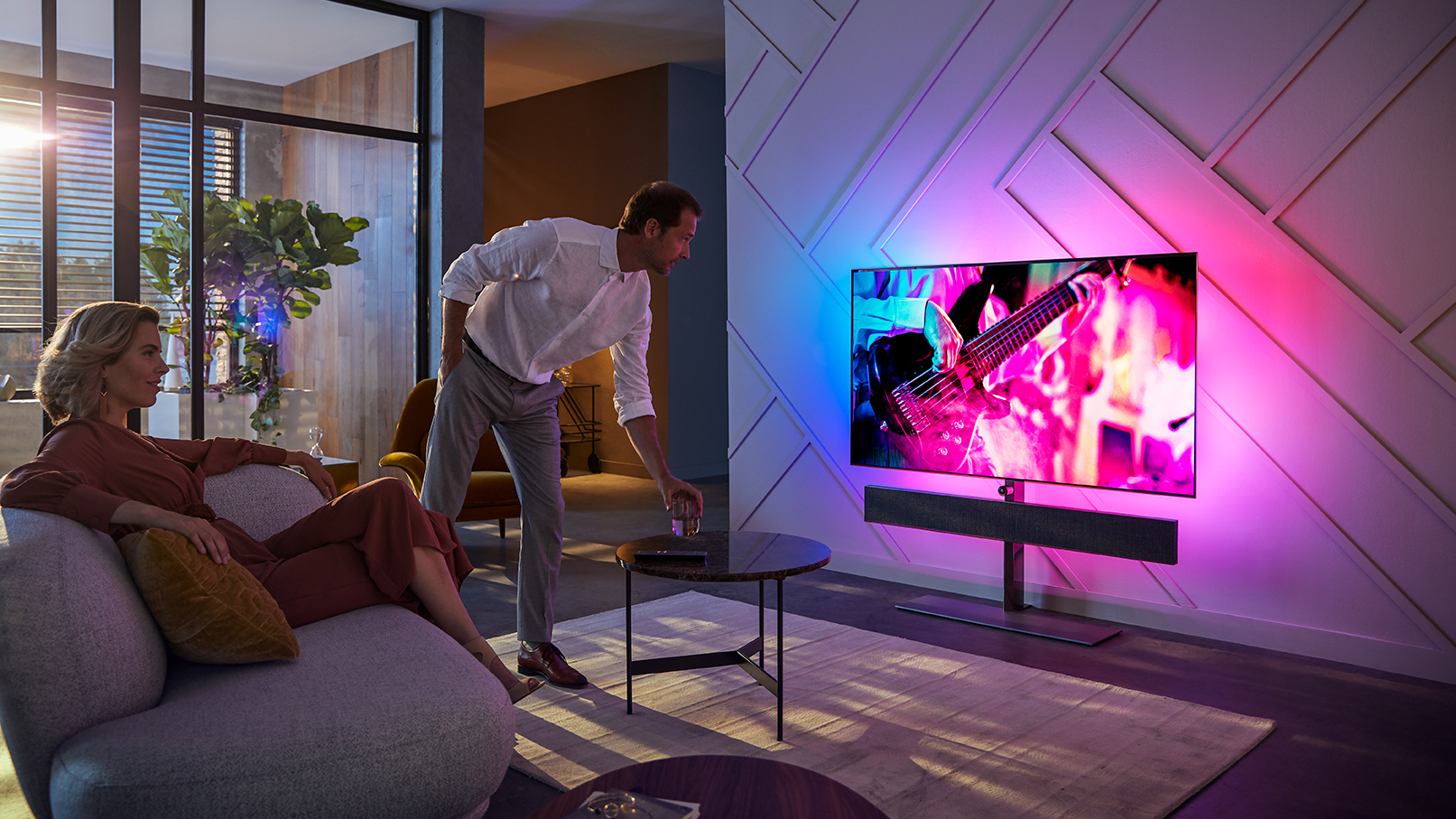
IFA 2019 is here. The Internationale Funkausstellung (or the International Radio Show) is one of the biggest consumer technology expos in the world.
The show kickstarted with a host of announcements from a number of the most influential technology companies. We've already seen new smart speakers, sound bars, true wireless earbuds, and a bevy more tech.
If you're short on time, we've saved you the hassle of sitting through the keynotes by listing the key announcements so far. We'll keep this page updated throughout the course of the show – and with a slew of new 5G phones, foldable smartphones, wearables, and smart home devices it's definitely one to watch.
- Here's everything you need to know about Philips Hue smart lights
- You want the best laptops on the market? Well we've got them
IFA 2019: when and where is it happening?

As usual, IFA 2019 is taking place in Berlin, at the Messe Berlin exhibition grounds. The official dates for the event – which is open to the public – are Friday the 6th of September to Wednesday the 11th of September, 2019.
Around those dates will be the usual press events and launches, so it's possible that particular products will get announced that aren't on show on the exhibition floor. Don't worry though, because we'll bring you news of everything that's happening in Berlin in September – it'll almost be better than being there.
All the big names in attendance again this year. Just like last year, the likes of Microsoft, Sony, Huawei, Google, Sennheiser, Netgear, Lenovo, Garmin, Asus, Samsung, LG, Casio, Acer, Bang & Olufsen and more, have a presence in Berlin.
IFA 2019: what has been announced so far?
It's been a pretty packed show, with heavyweights like Amazon, Samsung, Intel and Asus unveiling new devices and technologies in press conferences ahead of the show. We've rounded-up the best announcements below, sorted by categories...
Get all the latest news, reviews, deals and buying guides on gorgeous tech, home and active products from the T3 experts
IFA 2019: Smartphones
Sony has announced its Xperia 5 – a new handset with the same design as the flagship Xperia 1 launched earlier this year, but in a more compact package.
Be warned that when we say "compact", we don't mean that compact. After all, the Xperia 5 still boasts an impressive 6.1-inch FHD+ display. It keeps the unique 21:9 CinemaWide display, which means you can watch Hollywood blockbusters without any black bars along the top and bottom of the screen, introduced with the Xperia 1.
Sony also says the aspect ratio, which makes the handset much taller than rival devices when held in a portrait orientation, makes it ideal for running two apps in splitscreen on-top of one another.
There's also Gorilla Glass 6 on the front and back to shield against scuffs and cracks, as well as an IP68 certification against water and dust.



As you'd expect from a smaller version of the Xperia 1, there is a triple-camera system on the back of the handset with three 12-megapixel image sensors and optical image stabilisation to improve shots in low-light.
First introduced with Xperia 1, the new Xperia 5 continues to take mobile cinematography pointers from the Sony digital cinema camera division. As such, the Cinema Pro “powered by CineAlta” has been tweaked to allow smartphone owners to create multiple projects with different settings as well as offering more flexibility in adjusting white balance, manual focus, and audio recording levels which will be music to the ears of any budding amateur Spielbergs looking for a new phone.
To complete the experience, you can now trim individual clips and merge them together for professional cinematic capture on the go.
Xperia 5 has a 3,140mAh battery cell, which Sony says is more than enough to keep it ticking along all-day. It also supports wired-fast charging when you do run out of juice. Powering the handset is a Qualcomm Snapdragon 855 – the same silicon found inside the Xperia 1.
Sony Xperia 5 will launch Android 9 Pie in the UK from Friday October 4, 2019. Pre-orders for the handset will be available from September 18 with EE, and September 19 with Carphone Warehouse in the UK. For a limited time, pre-order will come with a free pair of Sony WF-1000XM3 truly wireless noise-cancelling headphones.

Samsung has confirmed some very exciting news about its delayed Galaxy Fold during its IFA press conference.
A 5G-enabled version of the flagship folding phone will be available to buy from September 18, 2019 in the UK from its exclusive network carrier partner EE, as well as Samsung Experience Stores. The flexible handset will also be displayed at Samsung KX, Harrods and Selfridges for customers to experience before they buy.
Motorola also had a significant presence at the IFA tradeshow this year, bringing its all-new Motorola One Zoom to the show-floor. The handset is the first from the manufacturer to feature a quad-camera system and will stand toe-to-toe with the likes of the Samsung Galaxy A9.
The quad rear camera system consists of a 48MP (f/1.7) main camera sensor with optical image stabilisation and quad pixel technology, an ultra-wide angle sensor capable of shooting at 117-degrees, an 8MP telephoto sensor that delivers 3 x optical zoom and 10 x hybrid zoom, as well as a 5MP depth sensor.

The Motorola One Zoom then partners these four camera sensors with a 25MP front-facing selfie camera, which also supports quad pixel shots.
Away from cameras, the Motorola One Zoom comes installed with a Snapdragon 675 CPU, 4GB of RAM, 128GB of storage space, and a 4000 mAh battery. In addition, the phone is equipped with an integrated fingerprint reader, which is an underscreen unit, and comes coated front and back with Gorilla Glass 3.
And speaking of screen, the Zoom has a 6.39-inch OLED display. This is a Full HD+ panel that delivers a resolution of 2340 x 1080 within a 19:9 aspect ratio. The phone has an 85 per cent screen-to-body ratio.
IFA 2019: TVs and Home Cinema
First up, Amazon announced a range of new Fire TVs that are actual TVs. That's huge, at least for non-Americans – TVs with Amazon Fire OS in are very well established over there. Amazon confirmed TV sets from the likes of JVC, Grundig and Toshiba with the same cinematic Fire OS you'd previously only be able to get on the big screen with one of its Fire TV Sticks built-into the hardware.
Amazon also says it's working with other manufacturers like Skyworth, Arcelik, TPV, Compal, and others to deliver a broad line-up of Fire TV Edition Smart TVs, so expect to see plenty of Fire OS-enabled sets in the coming months.
And for those who don't want to upgrade to a new TV but still want access to the latest and greatest from Fire OS, Amazon also unveiled a more powerful successor to the Fire TV Cube – twice as powerful, to be specific. As well as meaning faster operation, this also allows for support for Dolby Vision HDR at up to 60FPS as well as all the usual 4K, HDR10 and surround sound processing, including Dolby Atmos.
Anker also wanted to get in on the Fire TV action, too. The company announced a new sound bar with Fire OS built-in, which will save you a plug in the extension lead hidden beneath your TV cabinet at the very least. The groovily-named Nebula boasts 4K and Dolby Vision support via pass-through, and can be controlled with Alexa just like its rival, the Sonos Beam.

Next up, LG confirmed that it had kickstarted the roll-out of its pixel-packed 8K OLED and NanoCell televisions this month, with models arriving in the UK and the United States. The South Korean manufacturer claims to be the first in the world to launch an 8K OLED TV – branded the LG Signature 88Z9. It was first shown-off at IFA last year and has a eye-watering resolution of 7680 x 4320 pixels.
The LG Signature 88Z9 boasts a 88-inch screen size, which should be more than enough to get the full effect when watching blockbusters like Mad Max: Fury Road and Avengers: Endgame at home. LG has integrated an 80W sound system into the set to provide powerful audio without a sound bar, at least, in theory.
But if you did want a sound bar, the next announcement will be of interest... streaming set-top box maestros Roku have unveiled a new sound bar during its press conference at IFA. After dabbling in wireless speakers for the first time last year, Roku announced a new soundbar and wireless subwoofer that will be coming to the United States in October.

Similar to the Anker Nebula mentioned above – albeit with a much, much duller brand name, the Roku Smart Soundbar combines a 4K Roku player with a 32-inch 2.0 soundbar for $179, roughly £149. The Smart Soundbar has two speakers for each channel and can play content from the thousands of channels that are available on Roku, including the likes of Netflix, Amazon, BBC iPlayer, ITV Hub, and more.
Roku includes a nifty Voice Remote with the Smart Soundbar, so you can bark orders at the TV and avoid the nightmarish experience of typing out a long-winded show titles using the directional pad on your remote control. The Wireless Subwoofer only works with either the Smart Soundbar, or previous Roku-branded wireless speakers, so you can't use it as a standalone. However, if you're all-in on Roku, it promises to add some weighty bass to your set-up for $179, roughly £149.





Philips TV has unveiled a new OLED TV with the "most advanced sound system ever offered on a TV". Dubbed OLED+984, the 65-inch television has a sound system that is mounted in a dedicated cabinet beneath the set. This arrangement enables Philips to ship larger drive units and for the system to be driven harder, which enables the TV to create a more spacious soundstage that tracks dialogue to the centre of the screen while providing what Philips calls "low-distortion, room-filling sound".
The set takes advantage of many signature Bowers & Wilkins acoustic technologies. In addition to its acoustic and mechanical advances, OLED+984 features the latest-generation Dolby Atmos decoding and processing for spacious audio that combines with the four-sided Ambilight to create the most immersive viewing experience.
IFA 2019: Audio
Audio-Technica has introduced a pair of brand-new true wireless headphones, dubbed the ATH-CKS5TW and ATH-CK3TW.
Both of these wireless earbuds are designed to a lightweight designs, long-lasting battery life, Bluetooth 5.0 wireless technology – and start from a pretty reasonable sub-£100 price tag. Both earbuds – ATH-CKS5TW (£149) and ATH-CK3TW (£99) – boast a IPX2 water resistant design rating, so there should be no worries wearing these while sweating in the gym, or during heavy rainfall on the walk to work.

The wireless earbuds sport battery life of around six hours, with an additional 24 hours of power deliverable via the charging case, which uses USB-C. Audio-Technica ATH-CKS5TW will be available September 2019, while the ATH-CK3TW are available from November 2019.
IFA 2019: Smartwatches and Wearables
Polar has unveiled a number of new colours for its Polar Ignite – one of the Finnish brand's most popular running watches. Since it was only announced two months ago, it might seem a little early to be lavishing new paint jobs on the wearable.
However, the company says it's confident the new colours – rose gold, pink and black, and copper – will only attract new users to the platform. The running watch retails costs a little under £180 ($230) and offers a multitude of options, including GPS tracking, built-in heart rate monitor, training plans, and a colour display.

Meanwhile, Asus unveiled its answer to the Fitbit and (award-winning) Apple Watch ranges. Dubbed Asus VivoWatch S, the smartwatch crams in a multitude of fitness tracking features, including built-in GPS as well as an ECG (electrocardiogram) monitor – exactly like the Apple Watch Series 4.
Not only that, but the Asus VivoWatch S is also waterproof down to 50 metres, has a built-in heart-rate reader and an altimeter and a Pulse OX feature that allows you to monitor the amount of oxygen in your body. Asus also claims that its new wearable can measure your blood pressure, too. Although, it has yet to detail exactly how that process works.
Perhaps most impressive of all, Asus claims the fitness watch can last for around 14 days on a single charge. However, it hasn't specified how much that battery life will drop when when the GPS is powered-on during workouts.
Garmin has also taken to the stage at IFA to bring a bevy of new smartwatches, including a new line-up for its Venu brand of GPS wearables with OLED touchscreen displays. Unlike the Apple Watch, which the Venu is clearly designed to unseat, the OLED can be set to an always-on mode to function like a traditional timepiece.
Garmin Venu is designed to be wore throughout the day – alerting you about important events on your calendar while you're in the office, help with fitness goals at the gym after work, and pay for your weekly shop.
It has a 1.2-inch OLED touchscreen which can be used to demonstrate animated instructions for workouts including strength training, cardio, yoga, and Pilates. It can also be used to track your hydration, stress and menstrual cycle tracking, as well as pulse ox sleep tracking that uses oxygen saturation in your blood to determine just how restful your ZZZs were last night Venu can display notifications from your Android and iOS smartphone and is compatible with Spotify, Deezer, and Amazon Music. It also ships with Garmin Pay tap-to-pay system.
According to Garmin, Venu can last five days when used as a smartwatch, although this drops to six hours when playing music and using GPS on a workout. It will ship later this month for $399.99 (roughly £325).
As well as the Garmin Venu, the company also unveiled an updated version of its multi-sport Garmin Vivoactive watch series, which ships in 40mm and 45mm sizes. It also unveiled a refresh to the style-focused Vivomove series, which now includes Garmin Pay, GPS and pulse ox sleep tracking. Battery life is rated for up to five days with prices start from $249.99 (£200) and max-out at $549.99 (£450).
Puma teamed up with Fossil last year to the the sport brand's first ever smartwatch to life. And now it's back with a second-generation wristworn gadget.
The Wear OS-powered wearable houses a Qualcomm Snapdragon Wear 3100 chipset, coupled with 512MB of RAM and 4GB of storage for offline music and apps. As with its predecessor, the Puma Watch is designed for fitness enthusiasts. It's swimproof and lightweight, weighing 27g. The 30mm AMOLED screen will be encased in a 44mm aluminium frame.
According to Puma, the battery life is around 24 hours, which isn't all that shabby considering this boasts built-in GPS, NFC tap-to-pay contactless payments, heart rate monitoring, fitness tracking, and more.
Dave has over 20 years' experience in the tech journalism industry, covering hardware and software across mobile, computing, smart home, home entertainment, wearables, gaming and the web – you can find his writing online, in print, and even in the occasional scientific paper, across major tech titles like T3, TechRadar, Gizmodo and Wired. Outside of work, he enjoys long walks in the countryside, skiing down mountains, watching football matches (as long as his team is winning) and keeping up with the latest movies.


